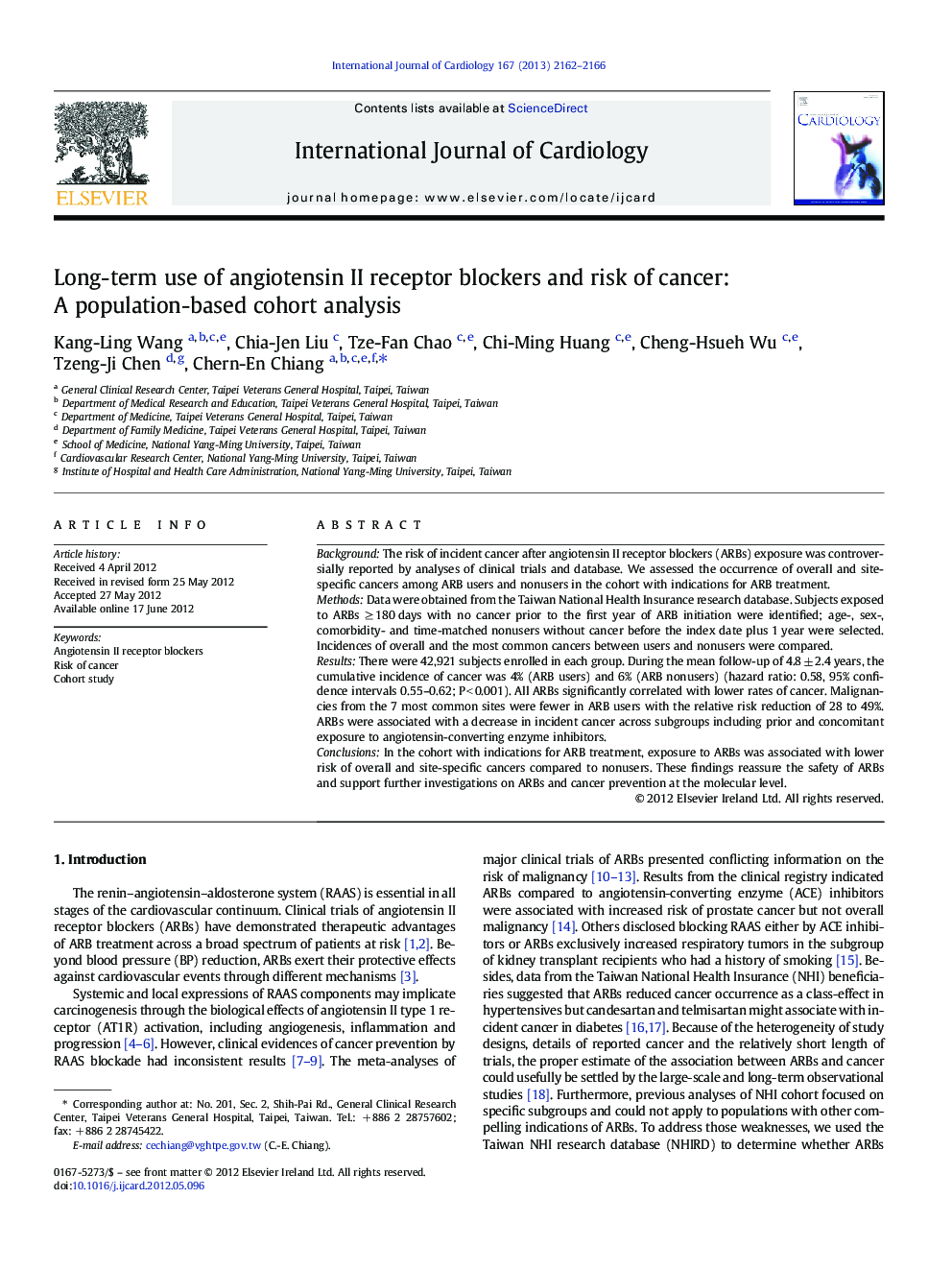| Article ID | Journal | Published Year | Pages | File Type |
|---|---|---|---|---|
| 5977282 | International Journal of Cardiology | 2013 | 5 Pages |
BackgroundThe risk of incident cancer after angiotensin II receptor blockers (ARBs) exposure was controversially reported by analyses of clinical trials and database. We assessed the occurrence of overall and site-specific cancers among ARB users and nonusers in the cohort with indications for ARB treatment.MethodsData were obtained from the Taiwan National Health Insurance research database. Subjects exposed to ARBs â¥Â 180 days with no cancer prior to the first year of ARB initiation were identified; age-, sex-, comorbidity- and time-matched nonusers without cancer before the index date plus 1 year were selected. Incidences of overall and the most common cancers between users and nonusers were compared.ResultsThere were 42,921 subjects enrolled in each group. During the mean follow-up of 4.8 ± 2.4 years, the cumulative incidence of cancer was 4% (ARB users) and 6% (ARB nonusers) (hazard ratio: 0.58, 95% confidence intervals 0.55-0.62; P < 0.001). All ARBs significantly correlated with lower rates of cancer. Malignancies from the 7 most common sites were fewer in ARB users with the relative risk reduction of 28 to 49%. ARBs were associated with a decrease in incident cancer across subgroups including prior and concomitant exposure to angiotensin-converting enzyme inhibitors.ConclusionsIn the cohort with indications for ARB treatment, exposure to ARBs was associated with lower risk of overall and site-specific cancers compared to nonusers. These findings reassure the safety of ARBs and support further investigations on ARBs and cancer prevention at the molecular level.
